- Home
- Wind Power
- How Wind Power Works
How Does Wind Power Work?
How does wind power work and what is it? Below I'll explain the basics.
To properly answer the question of how wind power works you need to know what wind is? I know that might sound patronising, but bear with me.
As the sun shines on the surface of the earth it heats the ground up unevenly due to many factors. This causes the heated air to rise and as it does so cooler air rushes in to replace it, causing wind.
Harnessing The Wind:
- In order to harness the wind, we can place a wind turbine in its path. The wind passing over the turbine blades (shaped like an aeroplane wing) causes the blades to turn.
- The turning motion of the blades rotates a shaft which is connected to a generator which converts the turning motion into electricity.
The simplest way to imagine the process is to think of your electric desk fan in reverse. So instead of turning on the fan at the switch and using the electricity to turn the blades to create wind, your residential wind turbine uses the wind to turn the blades and create electricity.
There are two types of wind turbine:
How Does Wind Power Work a Vertical Axis Wind Turbine:
This type tends to be quite rare in the UK (and the rest of the world for that matter). As the name suggests, the shaft is mounted vertically and the turbine is usually mounted closer to the ground.
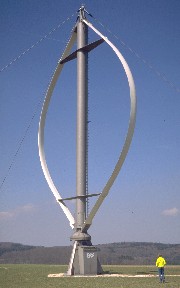
They have the benefit of being able to deal with wind from any direction and turbulent air. The downside is that they tend not to be as efficient as horizontal axis turbines.
They're also not capable of starting themselves from the wind passing over them meaning they need to be started mechanically.
Horizontal Axis Wind Turbines:
This is the type of turbine most of us think of when imagining a wind turbine. As you would expect, the shaft on this type is mounted horizontally with the blades rotating vertically.
The turbine is mounted on top of a pole which used to place it above other objects which could cause wind turbulence, and to get the turbine blades into fast moving air.
The air speed and quality of air flow increase the higher you go above ground level.
These horizontal axis turbines need to face directly into the wind in order to be most efficient. They achieve this either with yaw sensing equipment, or by mechanical means such as a tail rotor or vane.
With the mechanical systems, a small wind vane is located on top of the turbine which senses the wind direction and instructs an electric motor to move the turbine head (or nacelle) so that the blades face into the wind at all times.
They also have a braking system which will stop the turbine blades rotating if the wind speed is too great and risks damaging the turbine.
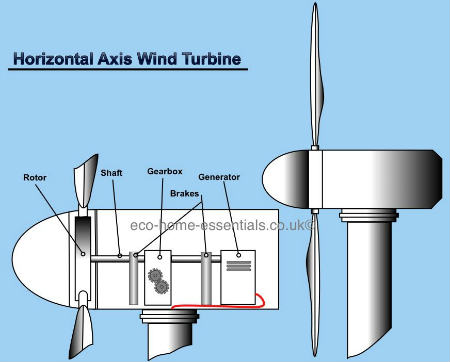
As you can see from the diagram above, the wind turns the turbine blades and hub, which in turn rotate the low speed shaft.
This low speed shaft goes through a braking system before being connected to a gearbox which causes the high speed shaft to revolve at an even greater speed.
The high speed shaft then goes through another braking system and finally into a generator which creates the electricity.
The diagram above is of a large residential or commercial turbine, but the principle in small residential turbines is very similar. Although a small turbine will make do with less internal workings the principle is very similar.
Now that you know how turbines work you'll also need to consider the pros and cons of wind power, some facts about wind power generation, the efficiency of power from the wind and how the amount of power you can extract from the wind in related to the size of your turbine (this last one will surprise you).
I hope this has helped you make sense of wind power and wind turbines. The next time someone asks you how does wind power work you'll be able to impress them with your knowledge!
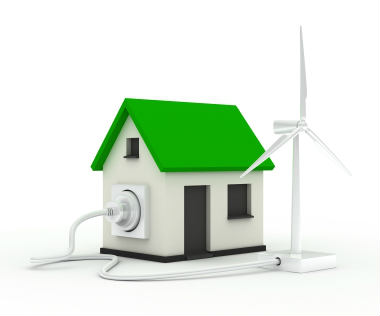
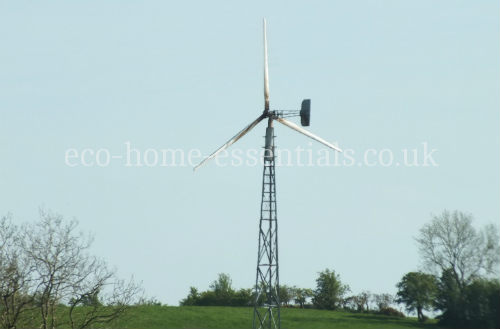
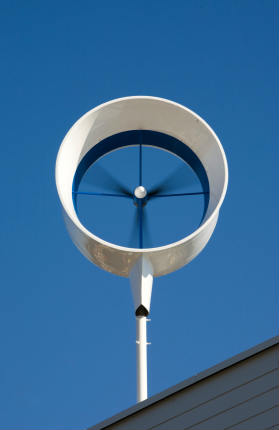
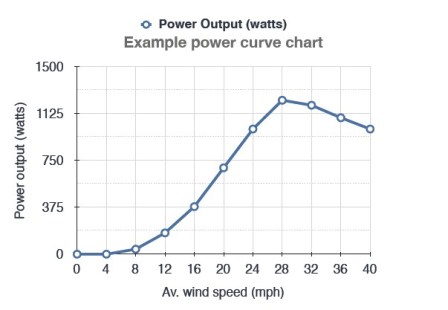








New! Comments
Have your say about what you just read! Leave me a comment in the box below.